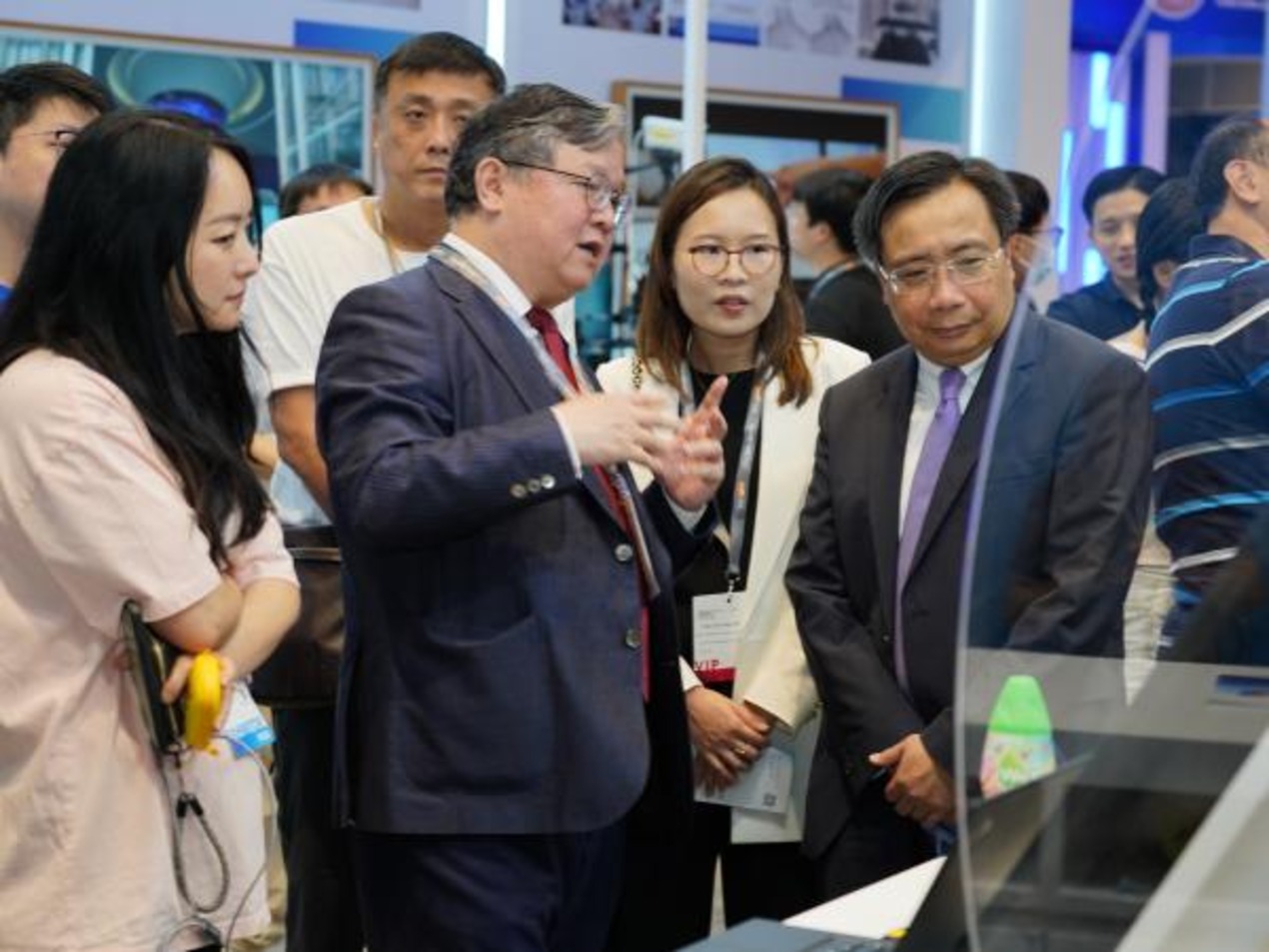
On 7 June 2018, over 80 senior technology executives from various Victorian Government agencies gathered at the Victoria OpenGov Leadership Forum 2018 to exchange ideas on enabling digital transformation with the Victorian Government to leverage new digital technology to quality public services to citizens. The exclusive full-day Forum took place at Pullman Melbourne Albert Park.
Chairman’s Opening Remarks
Mr Mohit Sagar, Managing Director and Editor-in-Chief of OpenGov Asia, kickstarted the Forum by highlighting the importance of digital transformation in the public sector.
In his Chairman’s Opening Remarks, Mr Sagar remarked that digital transformation is more than just the technology – it is about understanding citizens’ needs and driving desirable outcomes. According to him, government officials need to understand citizens’ needs, how they use technology and, more importantly, what
their agencies are trying to achieve, in order to make the best use of technology to improve public services delivery.
Gamification
The Forum then moved on to its first gamification session. Throughout the full-day event, the Forum hosted a total of four gamification sessions which engaged the senior technology executives in a series of open discussions and interactive gamification exercises through OpenGov’s signature Open Dialogue Table format.
Each table featured a different topic and was hosted by a senior government official and an industry leader to facilitate meaningful conversations and give an all-round perspective of the topic. A wide range of topics were covered at the gamification sessions, including artificial intelligence (AI), big data analytics, cloud utilisation, cybersecurity, data privacy, digital identity, smart cities etc.
In between the gamification sessions, OpenGov invited a few distinguished international speakers to present case studies on various governments’ experience in their digital transformation journeys.
New Zealand’s Integrated Data Infrastructure
The first to share an international case study was Mr Chris Buxton, Chief Digital Officer of Stats NZ, who spoke about New Zealand’s integrated data infrastructure. According to him, New Zealand’s Integrated Data Infrastructure is an enabler for research, which allows various government agencies to draw valuable insights into complex issues and better understand the needs of the citizens.
He shared how Stats NZ integrated microdata from two large integrated databases – Integrated Data Infrastructure (IDI) database and the Longitudinal Business Database (LBD) – for research about issues pertinent to New Zealand’s population. To ensure that the IDI and LBD data is kept safe, Mr Buxton explained that Stats NZ adopts the “Five Safes Framework” under which only authorised researchers working on approved statistical projects of public interest can access de-identified data at the Data Lab through which Stats NZ staff will ensure that no person nor business are identifiable in the data.
The Digitisation of the Australian Broadcasting Corporation
Mr Mark Bowry, the Radio and Regional Business Lead, ABC Technology at the Australian Broadcasting Corporation (ABC), then discussed the digitisation of the ABC. He shared that the vision of the organisation is to be the independent source of Australian conversations, culture and stories.
In the organisation’s ongoing efforts to remain a trusted and relevant part of Australians lives, the ABC went from doing a one-way broadcast through AM radio to fully interacting with the audience on social media. To reach a larger audience, the ABC has went beyond using only one-way broadcast and expanded into other channels and medium including podcasts and iView.
Delivering on the Data Democratisation through Data Science as a Service
To give an industry perspective, Mr Mitch Robinson, Senior Data Scientist at Leidos Australia delved into the topic of data science as a service. According to him, we are on a journey to citizen data science in which the emergence of big data and analytics improve accuracy. Such technological advancement thus created a need for the modern enterprise to shift strategic direction from process based to data driven.
However, for most businesses, this transformation is still in its infancy. Typical analytical challenges that businesses face include capability establishment, data engineering, data discovery and insights productisation.
In his sharing on how Leidos expedites customers’ digital transformation journeys, Mr Robinson highlighted the importance of using the right tools that allow rapid and secure data access for the organisation to develop trusted and actionable insights.
The Netherland’s Experience in Digital Identity
Mr Frans Rijkers is the Strategic Advisor Innovation and Identity, National Office for Identity Data at the Ministry for the Interior and Kingdom Relations, the Netherlands. His sharing focused on the Dutch journey in creating a self-sovereign digital identity.
To start, Mr Rijkers shared that the vision of the Dutch Government is to leverage technology to provide citizen-centric public services and create a network society. He then spoke about the Dutch Blockchain Coalition and how the blockchain platform allows the government to implement citizen identification whilst protecting and preserving the privacy.
In his sharing, Mr Rijkers emphasised the role of international collaboration in creating self-sovereign digital identity and the importance of empowering citizens to control their digital identities to build trust with distributed ledgers.
Leveraging Technology to Unleash the Power of Human Collaboration
Mr Tony Simonsen, Vice President – ANZ, Japan and Korea, Polycom gave insights on how the government can unleash the power of teams. Technology changes the way we live, work, and play. With technological advancements, business communication today is also vastly different from what it was in the past.
To unleash the power of human collaborations, Mr Simonsen highlighted the importance of empowering seamless collaboration across different platforms, ensuring interoperability of technology solutions and emphasising on the ease of use of these technologies.
Hong Kong: AI and the Future of Education
Dr Andy Chun, Associate Professor and former Chief Information Officer of City University of Hong Kong, spoke on the topic of AI and its implication on the future of education. His sharing covered the sustainable development goals of the United Nations (UN) with regards to education and how emerging technologies including AI can help to achieve such goals. His insightful session highlighted the importance of inclusive and quality education for all and lifelong learning, and how technology can serve as an enabler to the provision of affordable education.
Malaysia’s Approach to Cybersecurity
Dato’ Dr Haji Amirudin bin Abdul Wahab, Chief Executive Officer of CyberSecurity Malaysia, shared Malaysia’s holistic approach to cybersecurity. Such an approach contributed to Malaysia high global ranking on the Global Cybersecurity Index (GCI) by the International Telecommunication Union(ITU) which is a multi-stakeholder initiative to measure the commitment of countries to cybersecurity based on 5 pillars of governance, legal capacity, technical capacity, capacity building and international cooperation.
According to Dato’ Dr Abdul Wahab, having a holistic approach means capabilities in both identifying potential cybersecurity threats and its impact on national security and public well-being as well as developing cyber resilience to resist, respond, and recover from cybersecurity threats. In the case of Malaysia, the holistic approach has helped the country to see cybersecurity as more than just a technical issue. Instead, it addresses cybersecurity through implementing relevant policies, training a quality cybersecurity workforce, and developing cybersecurity processes and procedures to cope with cybersecurity challenges.
Other than international case studies, the Forum also featured panel discussions to deep dive into two major topics of interest include AI, big data analytics and cybersecurity.
Moderated by Mr Mohit Sagar, the two panel discussions explored how government agencies can harness the power of big data analytics and AI for better governance and improve citizens’ lives, as well as how public sector agencies can enhance their cybersecurity defence in the digital age.
Polling results
The Victoria OpenGov Leadership Forum also aimed to better understand the needs of the public sector agencies in their digital transformation journey through interactive polling sessions.
According to the polling results, 52% of the delegates came from agencies with total head count of over 1,000. 40% of them said their organisation have an IT head count of over 50 people. Around 30% of the attendees said their organisation has an annual budget of over $501 million and another 20% claimed to have an annual budget between $121 million to $240 million. 47% of the attendees indicated that their organisation’s annual IT budget ranges from $1 to $15 million.
In terms of the IT budget allocation, 24% said that less than 10% of the annual IT the budget is allocated to outsourced services. The top 3 outsourced area of IT services are in IT infrastructure management (41%), enterprise IT system (28%) and data centre (8%).
In terms of their IT and Information Management Strategy, 35% said their organisations are behind schedule for the implementation of the strategy while 28% are updating the existing strategy. A quarter said the implementation is as scheduled and only 6% claimed that the implementation is ahead of schedule. 6% of the delegates said their organisations do not have an IT and Information Management Strategy.
While 42% of the attendees said their organisation are in the process of updating their Information Security Infrastructure, 11% are undergoing policy review and problem definition process, while 9% are planning to update the infrastructure.
Regarding the organisation’s priorities, 43% named citizen-centric services their top priority, followed by cloud adoption and data management (34%), predictive analytics and AI (9%), cybersecurity (8%) and data sharing and privacy (6%)
At the same time, delegates also shared the top 5 major challenges their organisations face in implementing IT projects, which are: the lack of clearly defined goals and requirements (26%), lack of foundational IT infrastructure (20%), the lack of funding (18%), lack of in-house skills (14%), and lack of ownership by the business (14%). Only 1% of them are struggling to find the right technology partners.
Results also showed that the online transaction portal (40%), non-interactive websites (23%), and mobile application (14%) are the major digital public services that these public sector agencies offer. On the use of emerging technologies such as AI and blockchain, a majority (51%) of the attendees said they are currently not using or evaluating any form of AI and nearly half of them also said they need more information on blockchain to determine if there is a relevant application of the technology for the organisation. 32% of them also shared that data accessibility and sharing is the biggest pain point in big data value chain while 23% named data quality as the major challenge.
In terms of their biggest challenge in 2018, 38% are facing difficulties in creating the culture and openness to innovation, 27% of them are struggling with legacy infrastructure, and another 17% found cross-agency collaboration a challenge.
In terms of cybersecurity risks, employee negligence or malfeasance (32%), outdated systems and software (30%), and oversight of basic security practices (24%) were also named the biggest cybersecurity risks, highlighting the need to raise cybersecurity awareness among employees.
36% of the organisations are using or planning to use hybrid clouds while 25% preferred private clouds. In adopting cloud solutions, the lack of skills to manage cloud security (26%) is the main challenge, followed by the budget and procurement (24%) and security concerns (21%).
To their top strategy to achieve policy objectives, 52% of the attendees named a change in organisational culture to create a conducive environment to promote innovation, followed by upskilling internal resource (15%).





















